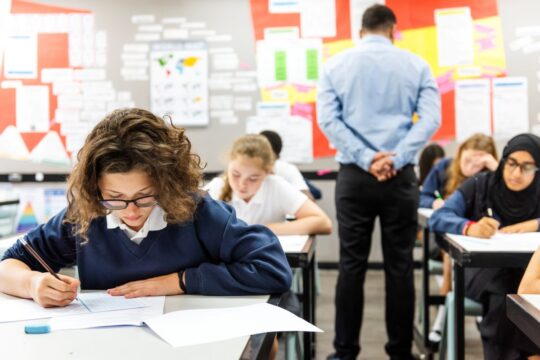Understanding Effective Teaching Strategies: A Deep Dive into What Works
Effective teachers constantly seek out innovative and engaging strategies to motivate their students. With the vast amount of educational theories and buzzwords available today, it can feel overwhelming to determine which methods are best for your classroom.
However, some classic, tried-and-true teaching strategies consistently prove to be successful. These staples are adaptable to various teaching styles and student needs, and they form the foundation of a dynamic learning environment.
This guide provides a detailed look at five core teaching strategies, explaining the “why” and “how” behind each one.
Differentiated Instruction: Tailoring Learning to Individual Needs
Differentiated instruction is an educational approach that allows teachers to customize lessons to accommodate each student’s specific learning style, readiness, and interests.
This strategy is rooted in the idea, championed by educational psychologist Howard Gardner in his Multiple Intelligences Theory, that every individual has a unique mind and, therefore, learns and processes information differently.
Learning stations are a highly effective method for implementing differentiated instruction. By setting up different stations, a teacher can provide students with the same task but at varying levels of complexity and in different formats to suit their individual needs and learning styles. This approach allows students to work at their own pace, fostering a sense of autonomy and success.
Cooperative Learning: The Jigsaw Method
Cooperative learning encourages students to work together in small groups to achieve a common goal. This collaborative approach not only leads to more effective learning but also helps students develop essential social skills and boosts their self-confidence.
A particularly powerful cooperative learning method is the Jigsaw Method. In this strategy, each student in a group is responsible for a specific piece of a larger task or topic. They become the “expert” on their part and then teach it to the rest of their group. This interdependent structure ensures that every group member’s contribution is vital to the group’s overall success. It teaches students critical skills such as:
- Communication
- Problem-solving
- Critical thinking
- Cognition
These skills are crucial for academic success and future careers.
Technology in the Classroom: Empowering 21st-Century Learners
In our increasingly digital world, integrating technology into the classroom is essential for keeping students motivated and connected. Technology-rich lessons have been shown to increase student engagement and provide a more dynamic learning experience.
Examples of how to effectively use technology include:
- Creating web-based lessons or multimedia presentations (e.g., videos, animations, graphics).
- Utilizing tablets or iPads for interactive activities.
- Taking virtual field trips to explore faraway places.
- Participating in online research projects to gather and analyze information.
- Creating a class website for sharing resources and updates.
These strategies empower students and have a significant positive impact on their learning outcomes.
Inquiry-Based Instruction: Encouraging Curiosity and Deeper Understanding
Inquiry-based learning is a student-centered approach that taps into our innate human curiosity. Just as babies use their senses to explore and understand the world, this strategy engages students by having them ask questions, investigate, explore, and report their findings.
This process leads to a deeper understanding of the content, allowing students to apply what they’ve learned to new, complex situations. Inquiry-based learning is a powerful tool for preparing students to tackle the complex problems of the 21st century and develop effective solutions.
Graphic Organizers: Visual Tools for Thinking and Organizing
Graphic organizers are simple yet highly effective visual tools that help students brainstorm and structure their thoughts and ideas. They make it easier for students to comprehend and retain complex information by presenting it in a clear, visual format.
Graphic organizers can be used across all subjects for a variety of tasks, including:
- Structuring writing assignments
- Brainstorming new ideas
- Planning projects
- Solving problems
- Making decisions
Some of the most popular and versatile types of graphic organizers include the Venn diagram, the concept map, the KWL chart, and the T-chart.
Finding the Right Fit
Ultimately, there is no single “best” teaching strategy. An experienced teacher knows that success comes from trial and error. The most effective approach is to experiment with different strategies and adapt them to your unique teaching style and the specific needs of your students. By doing so, you’ll discover which methods truly resonate and lead to the greatest positive impact in your classroom.




